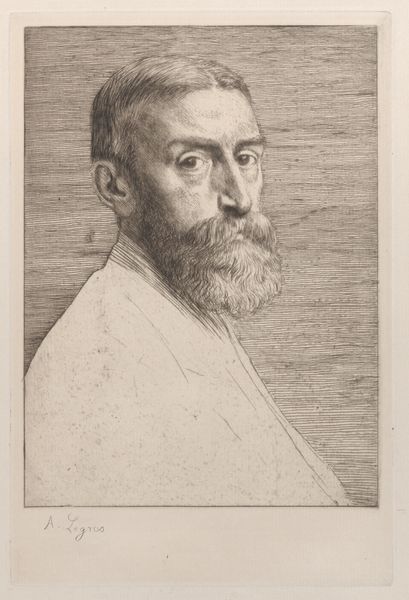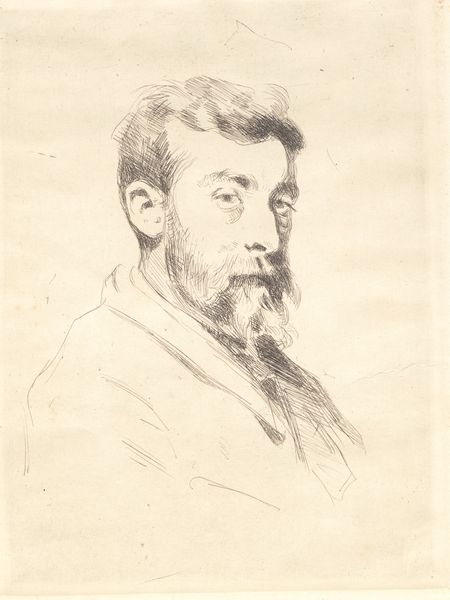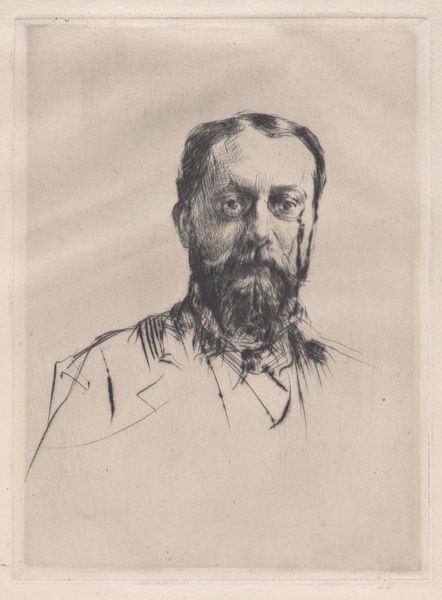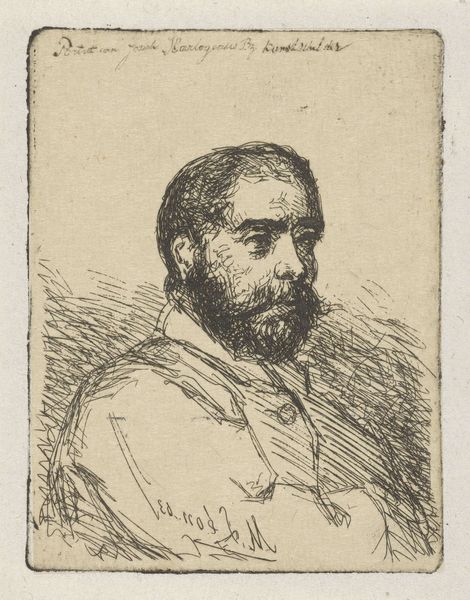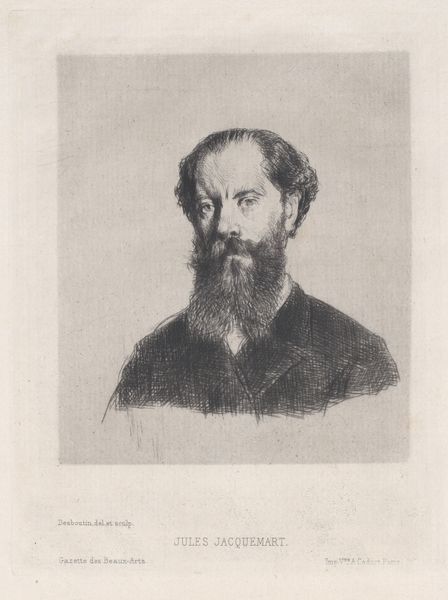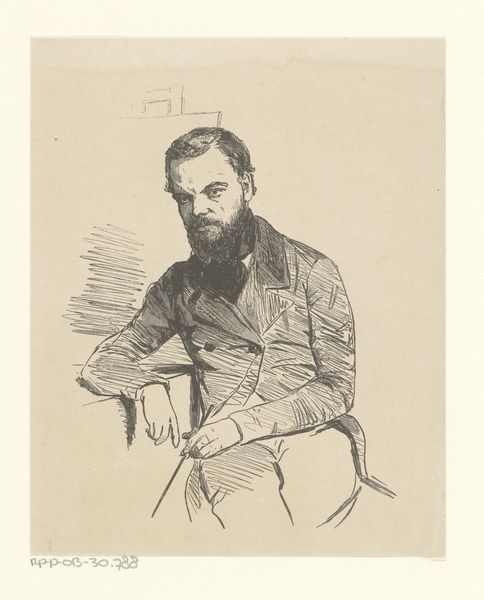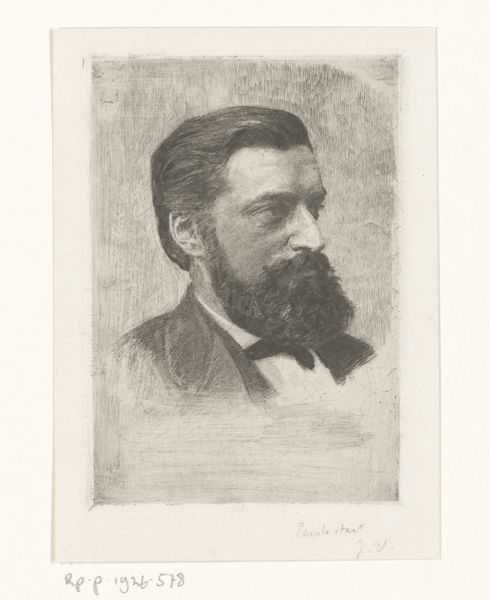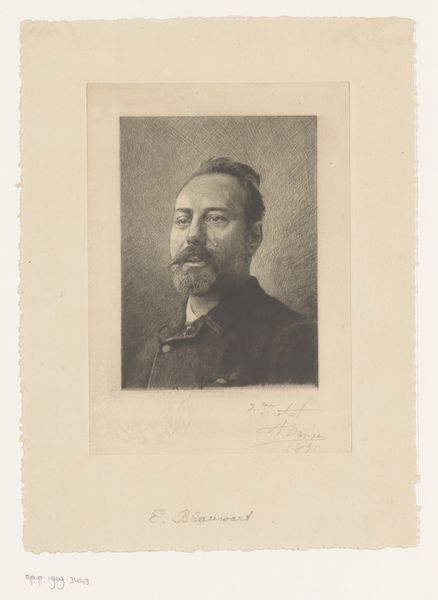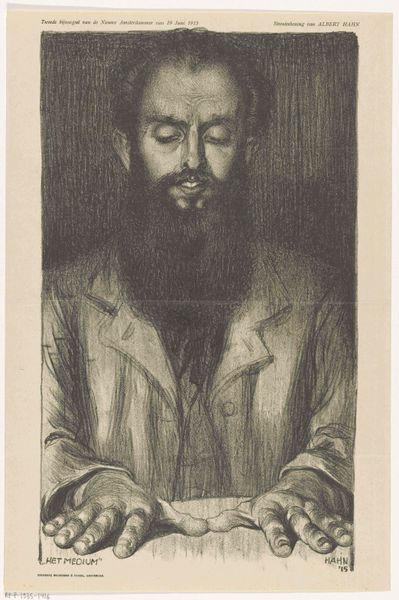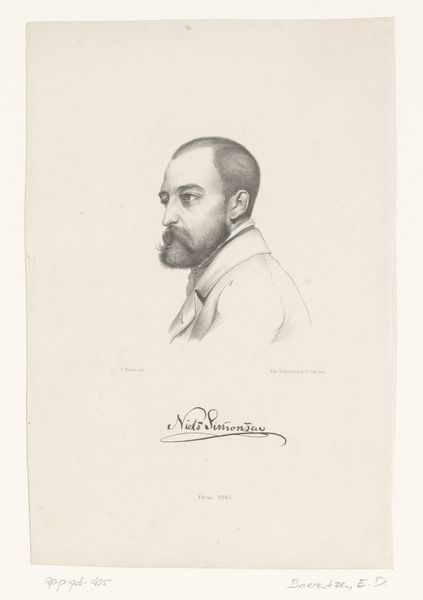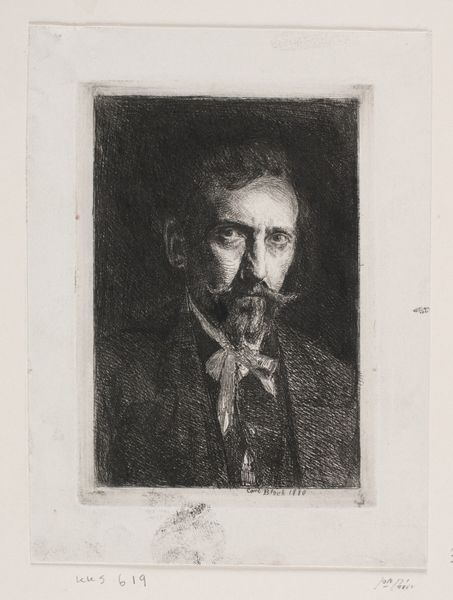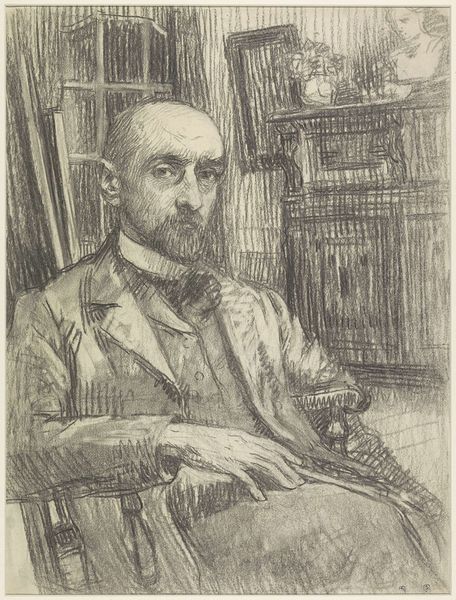
drawing, print, engraving
#
portrait
#
pencil drawn
#
drawing
# print
#
engraving
#
realism
Dimensions: Plate: 5 11/16 × 3 7/8 in. (14.4 × 9.8 cm) Image: 3 9/16 × 2 3/4 in. (9 × 7 cm)
Copyright: Public Domain
Editor: This is Charles Jacque's "Portrait de J.J. Guiffrey," created in 1866. It's a striking engraving. The detail achieved with the lines is really captivating; however, what can be said about the politics of imagery? Curator: Indeed. The piece itself is quite subtle, especially compared to the bolder political prints of the era, but consider the social standing being asserted here. In 1866, the ability to commission or even be the subject of a portrait, even a relatively modest engraved print, speaks volumes about class and access. Editor: That’s interesting. So, you're saying that it's less about any explicit political message, and more about who is considered worthy of representation in art at this time? Curator: Precisely. Also, think about the purpose and circulation of prints. Unlike paintings destined for private collections, prints allowed for wider dissemination of images, reinforcing social hierarchies. It became crucial who chose to participate and who had no option to participate. Do you recognize the importance of that? Editor: Yes, I think I see what you mean. It suggests a quiet assertion of cultural power. What are your thoughts? Curator: Exactly. Looking closer, the detailed depiction of J.J. Guiffrey, down to the intricate beard and formal jacket, subtly affirms his importance. Charles Jacque chose realism rather than something that may have had political commentary in it. Editor: That's helped me understand the artwork, not just as a portrait, but as an indication of social status and cultural representation. Curator: And how institutional structures shape what and whom we see. It makes one think about power within portraiture and printmaking.
Comments
No comments
Be the first to comment and join the conversation on the ultimate creative platform.
